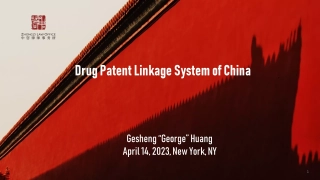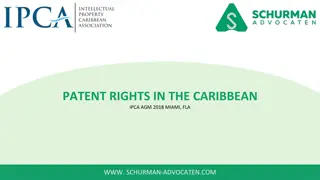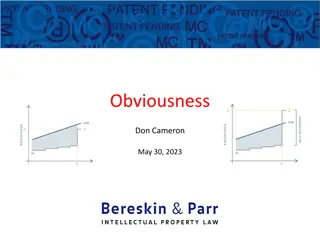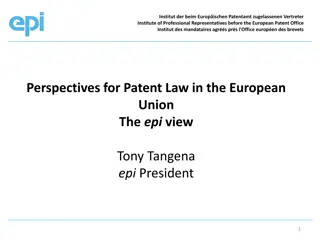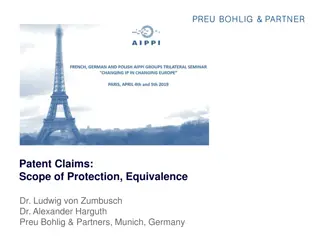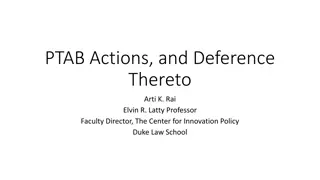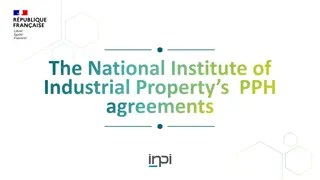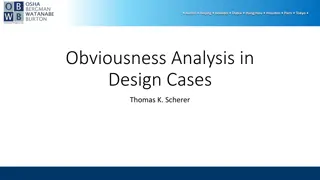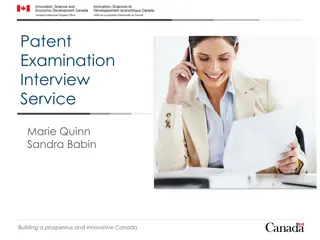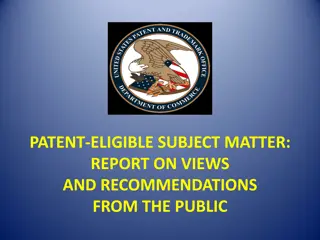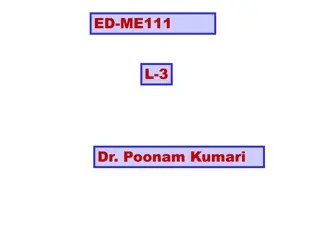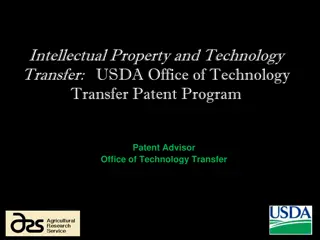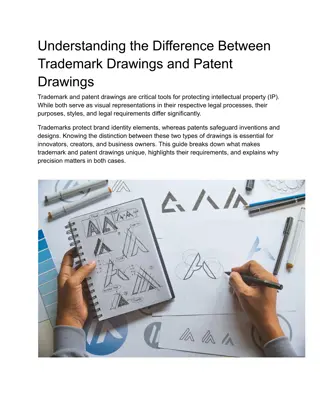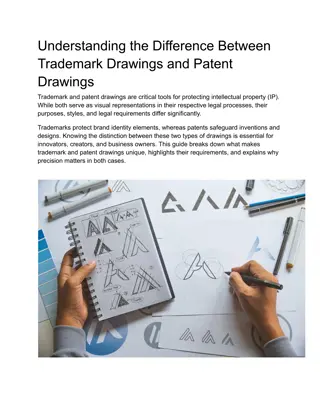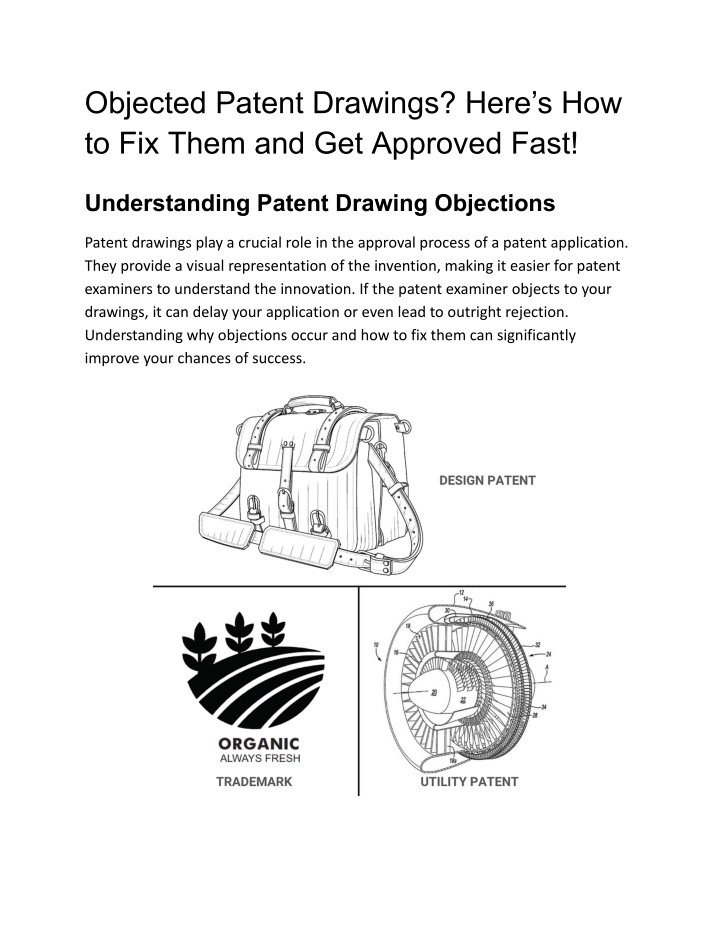
Objected Patent Drawings? Here’s How to Fix Them and Get Approved Fast!
Struggling with objected patent drawings? Learn the common reasons for rejections, how to fix them quickly, and best practices to avoid future objections. Discover expert tips, case studies, and professional solutions to get your patent approved fast
Uploaded on | 0 Views
Download Presentation

Please find below an Image/Link to download the presentation.
The content on the website is provided AS IS for your information and personal use only. It may not be sold, licensed, or shared on other websites without obtaining consent from the author. If you encounter any issues during the download, it is possible that the publisher has removed the file from their server.
You are allowed to download the files provided on this website for personal or commercial use, subject to the condition that they are used lawfully. All files are the property of their respective owners.
The content on the website is provided AS IS for your information and personal use only. It may not be sold, licensed, or shared on other websites without obtaining consent from the author.
E N D
Presentation Transcript
Objected Patent Drawings? Heres How to Fix Them and Get Approved Fast! Understanding Patent Drawing Objections Patent drawings play a crucial role in the approval process of a patent application. They provide a visual representation of the invention, making it easier for patent examiners to understand the innovation. If the patent examiner objects to your drawings, it can delay your application or even lead to outright rejection. Understanding why objections occur and how to fix them can significantly improve your chances of success.
Common Reasons for Patent Drawing Rejections 1. Non-Compliance with USPTO Standards Patent offices, including the USPTO (United States Patent and Trademark Office), have strict formatting rules. Drawings must adhere to specifications regarding margins, line thickness, shading, and labeling. Any deviation from these standards can lead to an objection. For example, in a 2021 case involving a medical device patent, the applicant faced rejection because the drawings used improper shading techniques. After corrections, the patent was eventually granted, but only after months of delay. 2. Lack of Clarity and Detail Patent drawings must be clear and precise. Blurry or ambiguous illustrations can cause confusion, leading to an objection. Examiners need to understand every aspect of the invention without ambiguity. A real-world example includes an automotive parts company that had its patent drawings objected to due to insufficient detail in the mechanical components. After hiring a professional illustrator to enhance the details, the revised drawings were accepted, and the patent was granted. 3. Missing or Incomplete Views Every essential perspective of the invention must be included. These typically include front, back, side, top, bottom, and sectional views. Omitting any of these can result in an objection. For instance, in a case involving a patented smartphone design, the applicant initially submitted only three views. The examiner objected due to missing perspectives. Once all required views were added, the application moved forward without further issues. 4. Use of Unauthorized Elements
Certain elements, such as colors, grayscale, or unnecessary text annotations, are not permitted unless explicitly allowed. The USPTO primarily requires black-and-white line drawings unless specific exemptions apply. In 2020, a wearable technology startup faced objections because their patent drawings included colored elements highlighting different components. Once the drawings were adjusted to comply with black-and-white guidelines, the application proceeded smoothly. How to Fix Objected Patent Drawings Quickly 1. Review the Objection Notice Carefully Upon receiving an objection, carefully read the examiner s comments. Understanding the precise reason behind the rejection is the first step toward fixing the issue. 2. Make Necessary Corrections Adjust your drawings according to the examiner s feedback. If the issue relates to missing views, ensure all necessary perspectives are included. If the problem involves non-compliance with USPTO standards, revise the formatting accordingly. 3. Use a Professional Patent Illustrator If you lack expertise in technical drawings, consider hiring a professional. Experienced illustrators are well-versed in patent office requirements and can ensure your drawings meet all necessary standards. For example, a biotech firm struggling with patent drawing objections hired a professional illustrator who revised their drawings. The corrections led to a successful patent approval within weeks.
4. Re-Submit with a Clear Explanation When submitting the corrected drawings, include a response letter explaining how the issues were addressed. This ensures the examiner sees that each objection has been properly handled. Best Practices to Avoid Future Patent Drawing Objections 1. Follow USPTO Guidelines from the Start Before submitting a patent application, review the USPTO s drawing requirements. Ensuring compliance from the beginning can save time and prevent unnecessary delays. 2. Maintain High-Quality Illustrations Ensure your drawings use the proper line thickness, accurate labels, and include all required views. Low-quality illustrations increase the likelihood of objections. 3. Work with a Patent Attorney or Agent Patent professionals can review your application and drawings before submission. Their expertise helps identify potential issues and correct them proactively. 4. Leverage Digital Drawing Tools Using advanced drawing software like AutoCAD, Adobe Illustrator, or CorelDRAW can help produce accurate and standardized illustrations. Many patent illustrators rely on these tools for precision. 5. Stay Updated on Patent Office Rules Patent offices occasionally update their requirements. Staying informed about any changes ensures your submissions remain compliant with the latest regulations.
Case Study: Overcoming Patent Drawing Objections In 2019, an entrepreneur seeking a patent for an innovative kitchen appliance faced repeated objections to their drawings. The issues included: Missing sectional views Improper line weight Lack of clear annotations After consulting with a patent attorney and hiring a professional illustrator, the entrepreneur made the necessary corrections. The revised application received approval within three months, highlighting the importance of proper illustrations. Conclusion Patent drawing objections can be frustrating, but they are not insurmountable. By understanding common rejection reasons and taking corrective measures, you can streamline your patent application process. Whether you choose to revise the drawings yourself or hire an expert, ensuring compliance with USPTO guidelines is key to securing approval. Don t let patent drawing objections delay your innovation. If you re struggling with rejected drawings, professional help is available to guide you through the process. Get Professional Help Today! Need expert assistance with objected patent drawings? Visit inventionip.com/objected-patent-drawings for professional patent illustration services and expert guidance on getting your drawings approved fast!

